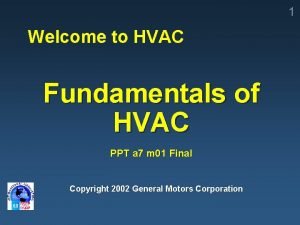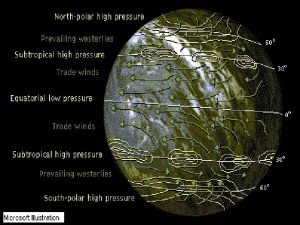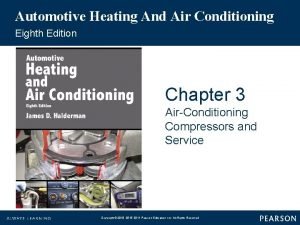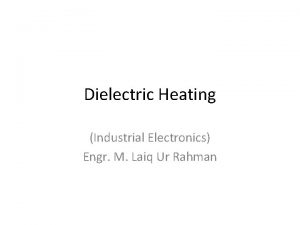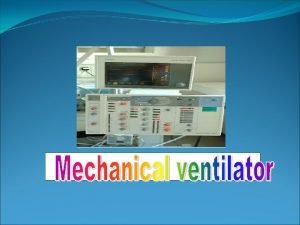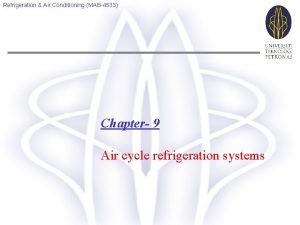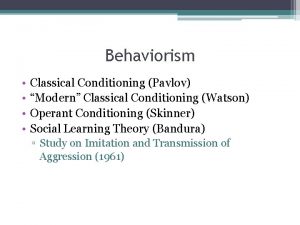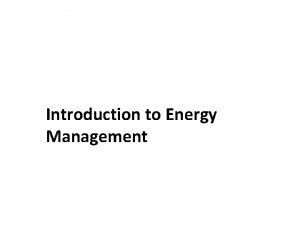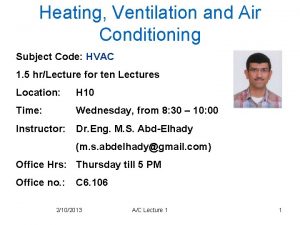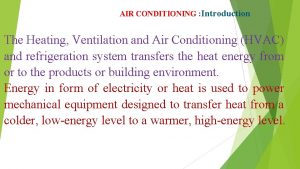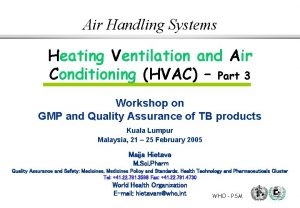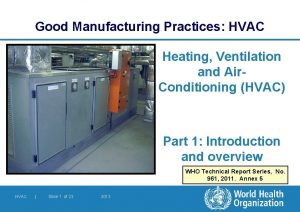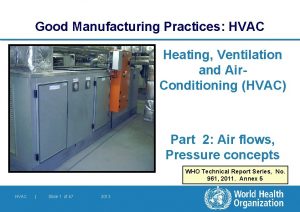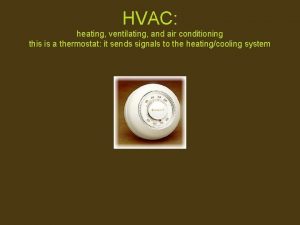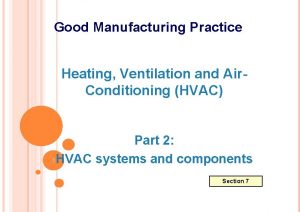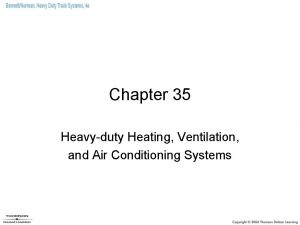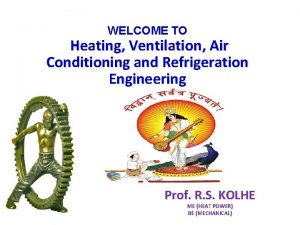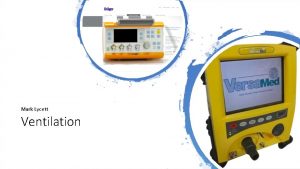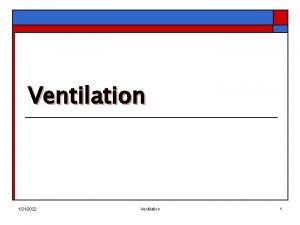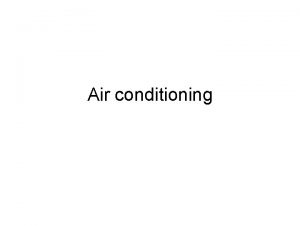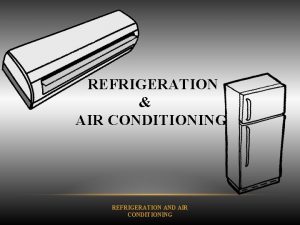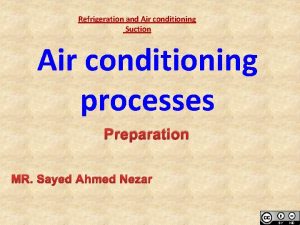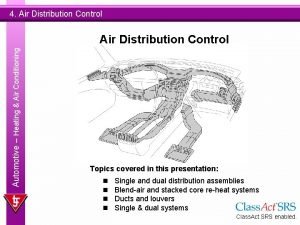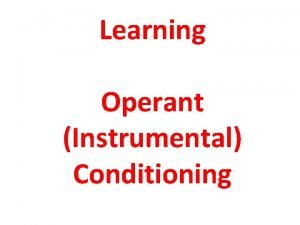Introduction to HVAC Heating Ventilation Air Conditioning Content
























- Slides: 24

Introduction to HVAC Heating, Ventilation, & Air Conditioning

Content covered: u Terminology, principles & properties of air relevant to IAQ. u Primary HVAC system functions and their impact on IAQ. u Major HVAC system components & configurations used to perform these functions.

Part I - Air u Terminology u Principles u Properties

Dry Air Approximate Composition (by volume): 78. 0 % 20. 9 % 1. 0 % 0. 1 % Nitrogen Oxygen Argon Other Gases

Wet Air = Dry Air + Water Vapor

Wet Air Composition Approximate Composition: 78. 0 % 20. 9 % 1 -2% 1% 0. 1 % Nitrogen Oxygen Water Vapor Argon Other Gases

Answer: “Billions and Billions. . . ” Question: How many molecules of air are in this room?

Answer: Really fast! Question: How fast do air molecules typically move?

Pressure = Force / Area u The total force exerted upon a given surface at any instant divided by the area of that surface u Expressed in “pounds per square inch” (psi)

Barometric Pressure u The total force of all air molecules impacting a given surface at a given instant in time divided by the area u AKA: “Atmospheric Pressure” u Measured using a barometer and stated in “inches of mercury”

Trick Question #1 u Which weighs more: 1 cubic ft. of dry air or 1 cubic ft. of humid air?

Air Density u Mass u At of air per unit volume 70 ° F. , the density of dry air is 75 lbs. per 1000 cubic ft.

Why Does Warm Air Rise? As the temperature increases, Causing its density to DECREASE

Vapor A gas which may condense to a liquid at normal temperatures Water Vapor is actually H 2 O gas occurring in a mixture with dry air.

Relative Humidity (RH) Ratio of the amount of moisture present in the air to the maximum amount which it can hold at saturation at a given temperature

Human Thermal Comfort u Defined in terms of both temperature AND relative humidity u ASHRAE Standard 55 -1992 contains a chart for determining human thermal comfort

Trick Question #2 u Which can hold more water vapor: WARM air or COOL air?

Sensible Heat The amount of heat which when added to air causes a change in temperature with NO CHANGE in the amount of water vapor present

Latent Heat The heat content of the water vapor present in the air

Total Heat = Sensible Heat + Latent Heat

Part II u HVAC System Functions u Impact on Indoor Air Quality

The Basics Heating Ventilation Air Conditioning

HVAC System Functions u Heating u Cooling u Ventilation u Filtration u Dehumidification u Humidification u Distribution

Impact on IAQ Over 50% of all IAQ problems are due to Inadequate Ventilation!
 Hvac system ppt
Hvac system ppt Ray's heating & air conditioning
Ray's heating & air conditioning Automotive heating and air conditioning 8th edition
Automotive heating and air conditioning 8th edition Dielectric heating
Dielectric heating Ventilation modes
Ventilation modes Air refrigeration cycles
Air refrigeration cycles Difference between classical and operant conditioning
Difference between classical and operant conditioning Vicarious reinforcement
Vicarious reinforcement Shaping in operant conditioning
Shaping in operant conditioning Classical vs operant conditioning
Classical vs operant conditioning Classical vs operant conditioning
Classical vs operant conditioning Classical conditioning and operant conditioning
Classical conditioning and operant conditioning Secondary reinforcer
Secondary reinforcer Difference between operant and classical conditioning
Difference between operant and classical conditioning Classical conditioning vs operant conditioning
Classical conditioning vs operant conditioning Operant conditioning classical conditioning
Operant conditioning classical conditioning Hubungan air dengan tanah
Hubungan air dengan tanah Hvac system introduction
Hvac system introduction Goddard heating and air
Goddard heating and air This operates simply by heating air in an enclosed space.
This operates simply by heating air in an enclosed space. Rohasys
Rohasys Hot humid
Hot humid Instrumentation 101
Instrumentation 101 What is esp
What is esp Dynamic content vs static content
Dynamic content vs static content
